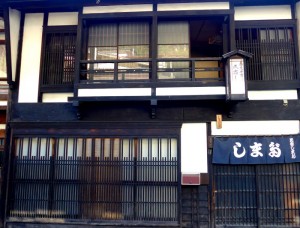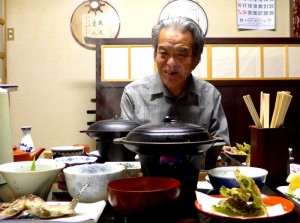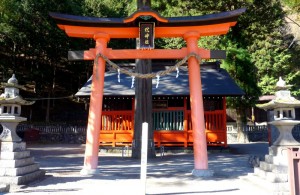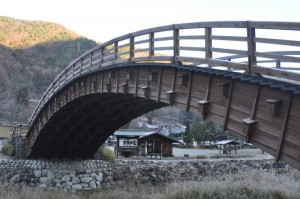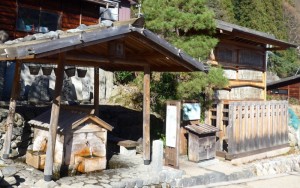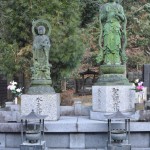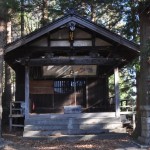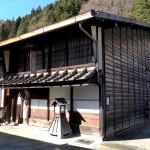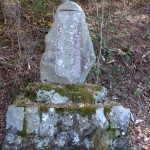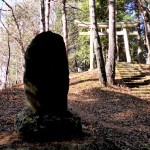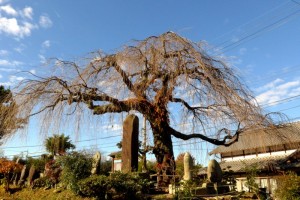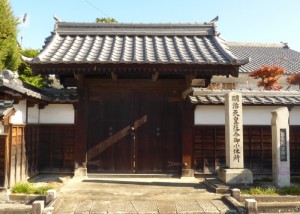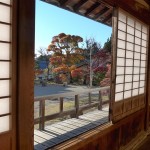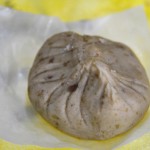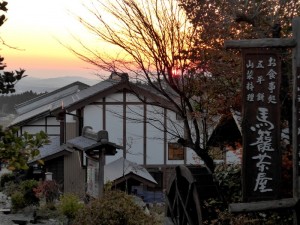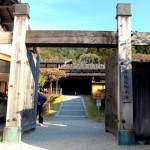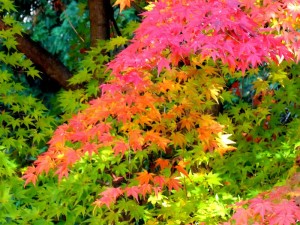 Cherry-blossom and foliage in Japan are most enchanting. I have seen cherry blossom three times but have never seen fall colours. I finally make my way to Kyoto in the fall.
Cherry-blossom and foliage in Japan are most enchanting. I have seen cherry blossom three times but have never seen fall colours. I finally make my way to Kyoto in the fall.
Background
Originally I planned to spend a month in Japan travelling from Hokkaido to Kyoto. As I could not leave Hong Kong till November 18, I decided to spend my time in Honshu本州.
First, I would spend three days on the “Nakasendō” (old roads made in the Edo Period (1603-1867) linking Edo (present day Tokyo) to Kyoto via the Kiso Valley through the central mountains.
Second, I would visit Miyo whom I met in the Trout Rock Lodge in Yellowknife, Canada. She has kindly planned a hiking route and reserved minshuku (guest house) for me from November 20 to 23.
Finally I would spend four days for foliage viewing in Kyoto.
November 19 Wednesday: Hong Kong (GMT+8) – Nagoya (GMT+9)
I left Hong Kong around noon and the flight time was three hours. The airport is user-friendly and not crowded. I got my luggage quickly, left the airport at 4:45pm and took the 5pm train to the city. This is a remarkable record!
Japan has many business hotel chains at convenient locations. I have become a member of Toyoko-Inn and booked a room on Sakuradori, which is 7 minutes’ walk from the Nagoya Station. The room though basic and small, has a comfortable bed and cost about ¥5,000 (US$1=¥115) including breakfast. I was also given a coupon for a snack at a nearby pub.
I was hungry as I had not eaten. After having a beer and beef on a skewer, I was still hungry. I ordered a bowl of soup (without noodles) by mistake. I paid over ¥1,200 for a very light meal!
After dinner, I went to the Japan Rail (JR) office to stamp my 7-day JR pass (¥29,000) for the period November 20 – 26.
4-Day on Nakasendō 中山道: November 20-23 Thursday-Sunday
Nakasendō中山道 (also known as Kisokaidō 木曾街道)
In ancient times, there were two roads linking Edo to Kyoto. The Nakasendō with a length of about 530km and 69 stations (i.e. juku/post-town) going through the central mountains is longer than the coastal Tokaido route.
Despite much modern development along the Nakasendō, a few stretches remain in its original form. In Kiso Valley 木曽谷there were once 11 post towns. Today, the most popular pathways in Nakasendō are from Nakatsugawa-juku 中津川 to Magome-juku馬籠宿 in Gifu Prefecture and Tsumago-juku妻籠宿 in Nagano Prefecture.
![images[4]](http://www.sarahontheroad.hk/wp-content/uploads/2014/11/images4-300x165.jpg) |
![images[3]](http://www.sarahontheroad.hk/wp-content/uploads/2014/11/images3-300x156.jpg) |
These old Japanese style towns have many historical sites including Japanese style hotels, checkpoints, Shinto shrines and Buddhist temples, watermills, kosatsuba (i.e. a street bulletin board pronouncing decrees from the shogunate), museums and places in connection with General Yoshinaka Kiso. Kiso Valley surrounded by mountains with numerous rivers and extensive cultivated fields is also known for its beautiful scenery.
Japan is well-served by rail. One can visit the entire area on foot, by train or by car. A hiker can send his/her luggage from one town to another at a modest cost (around ¥500).
Day 1: Nagoya名古屋to Narai奈良井via Tenryukyo 天龍峡by train
My original plan for today was to take the Chuo West Line from Nagoya to Yabuhara and then walk to Narai (6km). When looking at the railroad map at the station, I discovered I could take the Iida Line (飯田線) which runs parallel to River Tenryu with a famous gorge known for its scenery and beauty. As a result I spent eight hours instead of two hours on the train.
After sending my suitcase to Miyo’s place near Tokyo from a convenient store (¥1,340), I began my 8 hour-long journey taking five trains.
9:29am– Kodama 640 (fast train) to Toyohashi (28min)
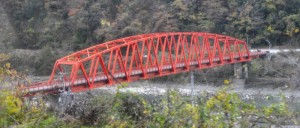 10:08am– I had a scenic ride in a wide-window express train with few stops to Iida. The scenery up to Tenryukyo is beautiful with a slow flowing river along the railway line. I also saw my first red maple tree on this trip in full sunlight! But the weather was not good and it was too late for the foliage in this area.
10:08am– I had a scenic ride in a wide-window express train with few stops to Iida. The scenery up to Tenryukyo is beautiful with a slow flowing river along the railway line. I also saw my first red maple tree on this trip in full sunlight! But the weather was not good and it was too late for the foliage in this area.
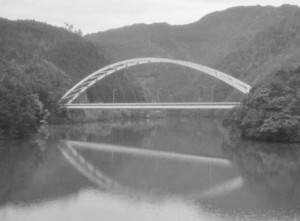 |
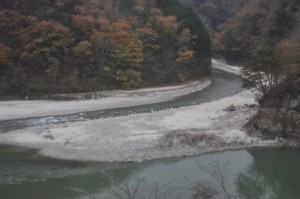 |
1:06pm– I began my 3-hour ride on a local train to Okaya. The train moved at snail pace and had to stop several times to wait for the opposite train to pass. I find this flat valley filled with sprawling development boring.
4:30pm– The fast train from Okaya to Shiojiri only takes 10min!
5:06pm– I was finally on the Chuo West Line and got off the train at Narai at 5:30pm.
It was pitch dark without street light. I did not know the location of Minshuku Shimada and had to ask a man for help. He was the only person at the station and kindly showed me the way. All writings are in Japanese and there is no way I can find it!
There were only two lodgers: a 65-year-old retiree and myself. We had a sumptuous dinner with 10 dishes including horse meat sashimi! I tried but felt uncomfortable. After dinner, I walked to Kiso Ohasi over the Narai River. Built entirely with hinoki cypress in the shape of a Japanese drum and extending 30m, it is one of the longest wooden bridges in Japan.
I paid ¥9,500 for accommodation and two meals. It was freezing at night. I did not put the heater on but the quilt was warm enough.
Day 2: Narai to Yabuhara藪原宿on foot (6km); by train to Kiso- Fukushima木曽福島
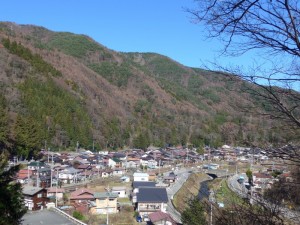 |
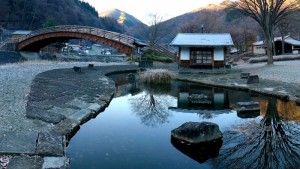 Narai (34th station)is often referred to as “Narai of a Thousand Houses”. The buildings have been kept very much the same since the Edo Period. In 1978, Narai was designated as a Cultural Asset and the conservation area is about 200m wide and 1km long consisting of Kanmachi (uptown), Nakamachi (midtown) and Shimomachi (downtown). Being one of the wealthiest post towns of the Kiso Valley, the traditional wooden houses are large with overhanging second floors and eaves. This feature is unique among the post towns.
Narai (34th station)is often referred to as “Narai of a Thousand Houses”. The buildings have been kept very much the same since the Edo Period. In 1978, Narai was designated as a Cultural Asset and the conservation area is about 200m wide and 1km long consisting of Kanmachi (uptown), Nakamachi (midtown) and Shimomachi (downtown). Being one of the wealthiest post towns of the Kiso Valley, the traditional wooden houses are large with overhanging second floors and eaves. This feature is unique among the post towns.
It’s freezing and the ground was covered with frost. I got up around 6:30am and had a nice walk to the bridge and around the midtown before breakfast. I set off just before 9am to take a closer look at this sleepy old town. It’s most enjoyable to roaming around alone!
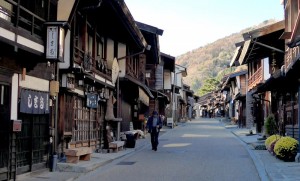 |
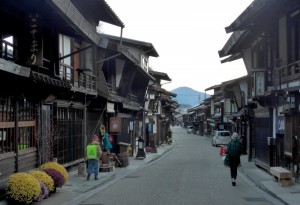 |
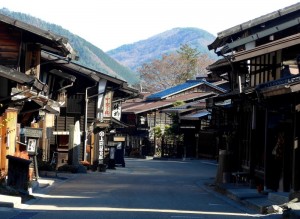 |
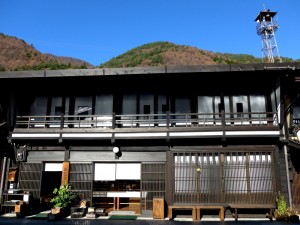 |
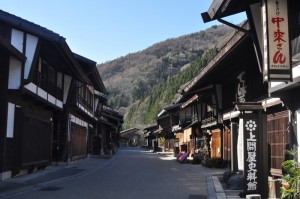 |
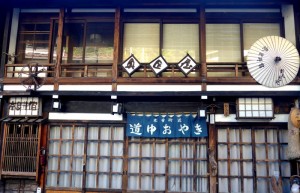 |
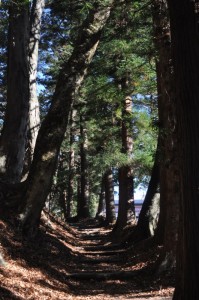 |
|
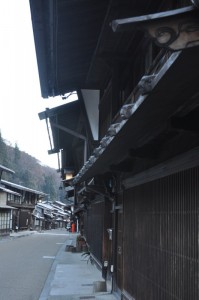 |
First I went to uptown and saw the Two Hundred Jizos where some 200 stone Buddhist images are standing in an orderly line. Deceased travelers without anyone tending their graves were brought here.
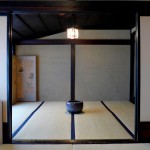 |
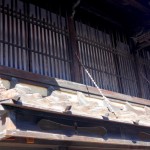 |
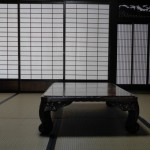 |
It was early and the temples and most of the souvenir shops on the 1km main street were closed. When I found the Nakamura House open, I paid ¥300 to see this former residence of a wealthy comb, wholesaler Rihei Nakamura, back in the Tempo Period (1830-1844). The high ceiling, dim light, simple layout and furniture, overhanging second floors and eaves create a timeless atmosphere.
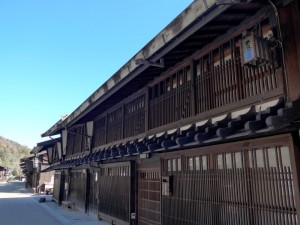 |
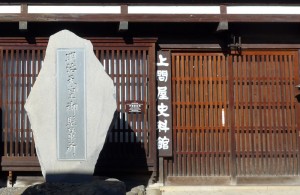 |
I was soaking in the rustic and sublime Edo townscape. Six water fountains are still in use. I went to the tourist office to pick up a self-guided walking map.
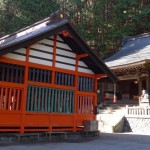 My final stop was Shizume Jinja located at the entrance of Torii Pass. The god of this shrine has relieved a plague that had spread here.
My final stop was Shizume Jinja located at the entrance of Torii Pass. The god of this shrine has relieved a plague that had spread here.
At 11am, I made my way to Torii Pass (1800m) which is 2km away. It was supposed to be a difficult hike. It was a sunny day and the path planked by tall trunks was covered by golden fallen leaves. I find the emptiness, serenity and tranquility most soothing. I did not meet any hiker but I was not scared. I reached the pass without problem. But I know I am not as fit as before.
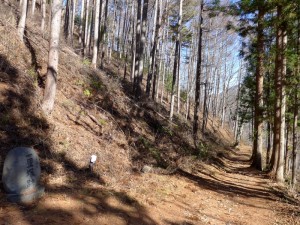 |
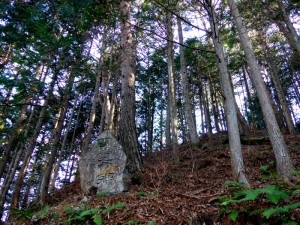 |
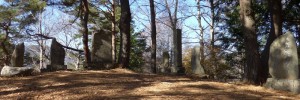 On this clear day, I had a glimpse of the snow-cladded Mt Ontake御嶽山(3,067m), Japan’s second highest volcano. It suddenly erupted on September 27 and Miyo had called to ask whether it was safe to walk in the area. At the pass, I met two elderly couples arriving by car. The 3.5km downhill walk to Yabuhara (35th station) was easy. I arrived at the train station before 1:25pm.
On this clear day, I had a glimpse of the snow-cladded Mt Ontake御嶽山(3,067m), Japan’s second highest volcano. It suddenly erupted on September 27 and Miyo had called to ask whether it was safe to walk in the area. At the pass, I met two elderly couples arriving by car. The 3.5km downhill walk to Yabuhara (35th station) was easy. I arrived at the train station before 1:25pm.
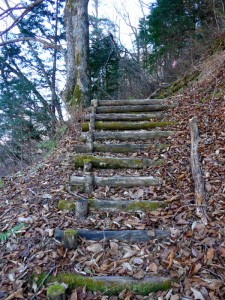 |
|
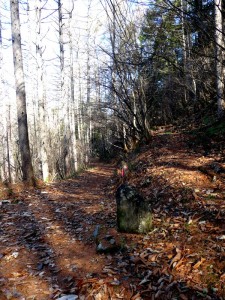 |
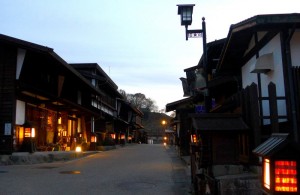 The train arrived ten minutes later. It’s a 10-minute ride to Kiso-Fukushima (37th station) which is located about half-way on the Nakasendō. This post town was a prosperous and important check-point and its historic sekisho or barrier station is one of the only two on the route. It used to have one of the four main control gates during the Edo Period. Today, it is the base for hiking to Mt. Ontake.
The train arrived ten minutes later. It’s a 10-minute ride to Kiso-Fukushima (37th station) which is located about half-way on the Nakasendō. This post town was a prosperous and important check-point and its historic sekisho or barrier station is one of the only two on the route. It used to have one of the four main control gates during the Edo Period. Today, it is the base for hiking to Mt. Ontake.
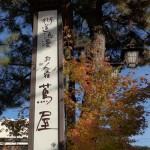 |
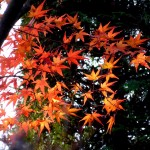 |
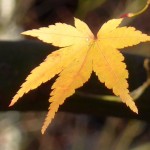 |
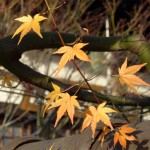 |
Miyo has booked me a single room without meals (¥7,500) in a hot spring hotel, Onyada Tutaya, by River Kiso. I arrived before 2:30pm and it was too early for check-in. I therefore went out sight-seeing.
My first stop was the Yamamura Daikan Yashiki Museum (the Governor’s House; ¥300 entrance fee). Explanations are in Japanese and I do not get much out of it. Anyway, I enjoy looking at the Japanese garden and the simple layout with minimal furniture.
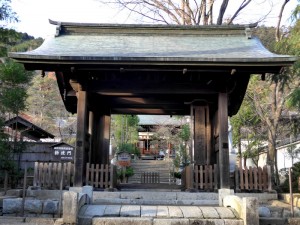 |
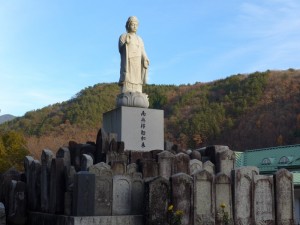 |
The next stop was the Kozenji Temple興禅寺.Owing to miscommunication with the receptionist, I missed the famous “Kanuntei”, a large dry rock landscape garden in the temple. I need a ticket (¥500) to get into the museum before reaching the garden.
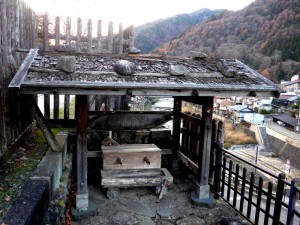 |
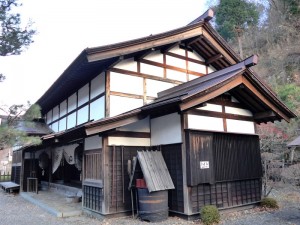 |
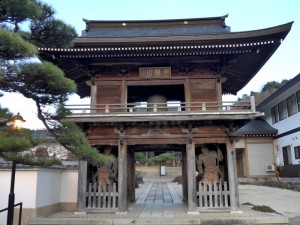 |
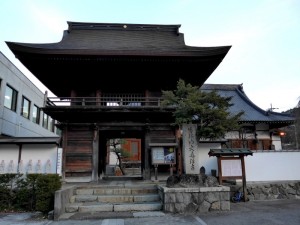 |
I crossed the river and had a pleasant self-guided walking tour. I walked uphill to reach the site of Fukushima Sekisho, the Takase Museum, Kyushoin and Daitsuji before arriving at Ue-no-dan – historical townscape- with many traditional houses.
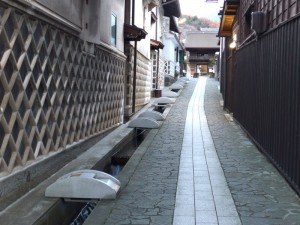 |
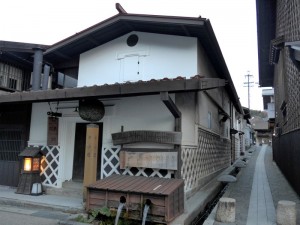 |
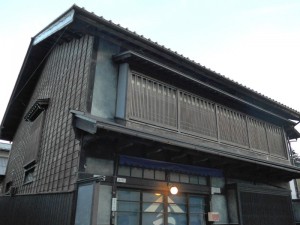 |
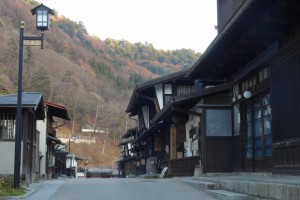 |
Unlike Narai, the old houses here had been built on hill slopes above River Kiso. The preserved Ue-no-dan is smaller but atmospheric with the sound of running water channeled through road-side ditches and wooden water wheels. There is an ashiyu or onsen footbath near my hotel.
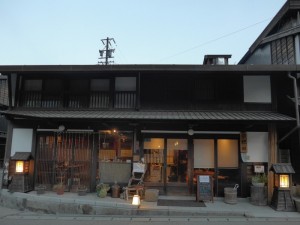 I spotted a lovely restaurant in Ue-no-dan which offers three menus ranging from about ¥4,000 to ¥6,000. I asked the owner whether I could have an early dinner at 5pm. He politely said that the restaurant was fully booked and his staff were busy.
I spotted a lovely restaurant in Ue-no-dan which offers three menus ranging from about ¥4,000 to ¥6,000. I asked the owner whether I could have an early dinner at 5pm. He politely said that the restaurant was fully booked and his staff were busy.
I like hot springs but my high blood pressure is a problem. As the spa is outdoor, I managed to stay in the steaming water for over 15 minutes. What a luxury! I had not eaten since breakfast and longed for a wholesome meal. I went to a restaurant close to the hotel which turns out to be a vegetarian one. After taking a set tofu menu for ¥1,600, I was still hungry.
The street was dead quiet. I was too lazy to find another eatery for a snack. At the end, I stayed in bed reading and writing. Energy saving on a cold night with an empty stomach!
Day 3: Kiso- Fukushima – Nakatsugawa by train; on foot to Magome via Ochiai 落合 (10km)
I got up early in order to catch the 7:42am train to Nakatsugawa (45th station). The express train from Nagano to Nagoya was packed: it was the first day of a long weekend in Japan. Many Japanese were travelling possibly to see foliage in the south. I had to stand all the way. Luckily, the journey only took 40 minutes.
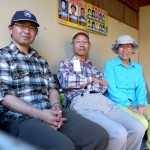 I went to the tourist information office to pick up an English map for a self-guided walk. Though the trail is remarkably well-signed, I hoped to find other hikers. While taking photos of a kosatsuba in Chayazaka with red maple leaves in the background, I saw two Japanese men with a map in their hand. I was lucky to have two companions (Yutake Yano and Gotou Kazuo). Though they cannot speak English, we manage to communicate using Chinese writings and sign language.
I went to the tourist information office to pick up an English map for a self-guided walk. Though the trail is remarkably well-signed, I hoped to find other hikers. While taking photos of a kosatsuba in Chayazaka with red maple leaves in the background, I saw two Japanese men with a map in their hand. I was lucky to have two companions (Yutake Yano and Gotou Kazuo). Though they cannot speak English, we manage to communicate using Chinese writings and sign language.
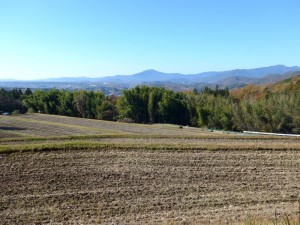 |
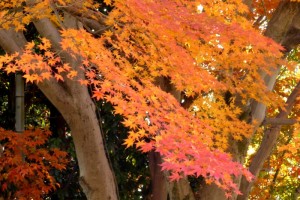 |
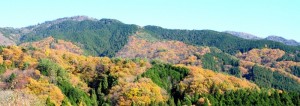 |
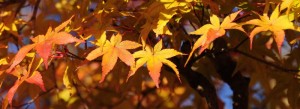 |
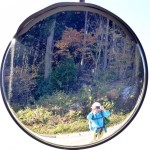 It was a most beautiful day with clear blue sky and gentle breezes. The Japanese are perfectionists attending to minute details. They have specially paved the path so that hikers won’t get lost! On the way to Magome, we had fun following the map and looking for landmarks and monuments illustrated in the map.
It was a most beautiful day with clear blue sky and gentle breezes. The Japanese are perfectionists attending to minute details. They have specially paved the path so that hikers won’t get lost! On the way to Magome, we had fun following the map and looking for landmarks and monuments illustrated in the map.
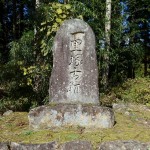 Without problem, we found the Stone Buddha statues of Kono, Milestones of Kono, Ochiai (44th station) Kuku Honjin (official appointed inn on the Nakasendō in the Edo Period), an enormous cauldron that was used to cook meals for Princess Kazunomiya about 150 years ago, Jyukkyoku Path, Lo-ji Temple, Ochiai Stone Path, monuments of “Koreyori Kita-Kisoji” and ‘Basho”. We walked through the Aramchi Village before reaching Magome.
Without problem, we found the Stone Buddha statues of Kono, Milestones of Kono, Ochiai (44th station) Kuku Honjin (official appointed inn on the Nakasendō in the Edo Period), an enormous cauldron that was used to cook meals for Princess Kazunomiya about 150 years ago, Jyukkyoku Path, Lo-ji Temple, Ochiai Stone Path, monuments of “Koreyori Kita-Kisoji” and ‘Basho”. We walked through the Aramchi Village before reaching Magome.
 |
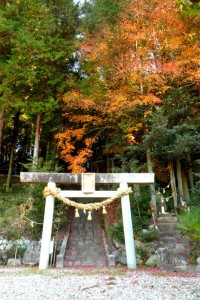 |
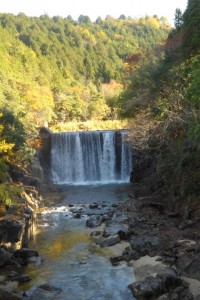 |
For me, the most impressive part of this 10-km trail is the Ochiai stone path covered with yellow leaves which turned golden in sunlight. The tall trees, dry leaves, solid stones with moss and the sound of wind and nature have created a Zen feel of solitude, emptiness and harmony.
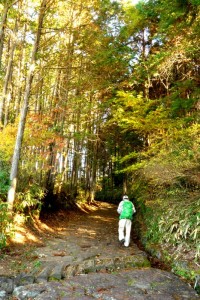 |
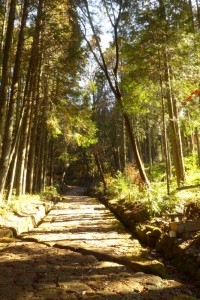 |
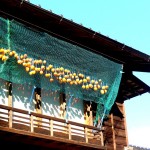 |
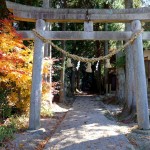 |
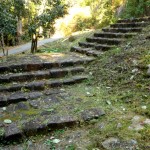 |
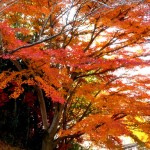 |
With a heavy backpack, I walked slowly and struggled a bit going up two long steep slopes. I felt sorry for holding the two kind Japanese men back as they waited patiently for me to catch up.
At midday, I finally arrived in Magome (the 43rd station) which according to records had 717 residents and 69 buildings in 1843. Houses have been built along the 600-m long main street. I stayed at Minshuku Magome Chaya which charges ¥10,400 for accommodation and two meals. Most of the lodgers are foreigners.
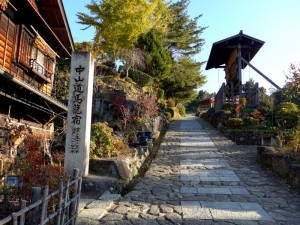 |
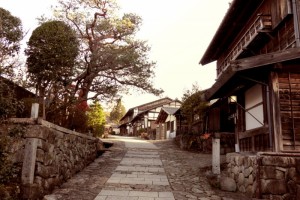 |
Magome located at 420 above sea level is popular with day trippers. At the entrance is Masugata a remnant of a fortress and a large watermill which is generating electricity. Most if not all have been turned into guest houses, restaurants, cafés and souvenir shops. I walked to Eisho-ji which was closed. Of the three museums here, I visited two.
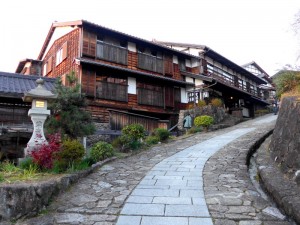 |
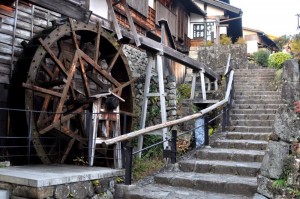 |
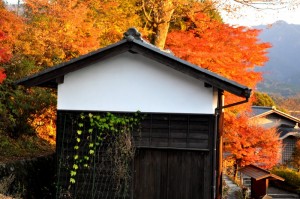 |
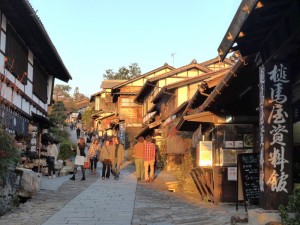 |
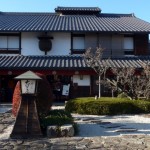 |
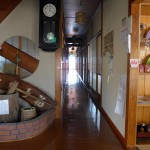 |
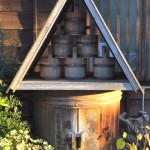 |
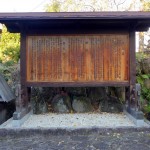 |
Magome-waki Honjin Museum (¥500) displays local artifacts in connection with history and route map of Nakasendō, menus and prices of the honjin and some household goods. It is interesting to note that women and men in those days were expected to cover 32km and 40km a day respectively. Wow, I am indeed a very slow walker.
Toson Memorial Museum (¥500) was a honjin where Shimazaki Toson島崎 藤村, (1872-1943), a renowned poet and writer was born. His grandfather was in charge of the honjin. His novel “Before the Dawn” is set in Magome Juku and Nakasendō from 1853 to 1886. I had an English information leaflet.
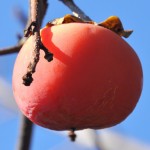 |
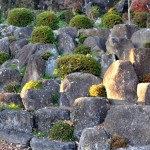 |
Kiso Valley is famous for soba (buckwheat noodle), chestnut cake and goheimochi (rice cake with miso). I had a feast and tried all of them for less than ¥1,500. The foliage here was beautiful. I had a good view of Mt. Ena (2190m) and watched a gorgeous sunset over the expansive plain. At 6pm, I had an excellent dinner with some 10 dishes including a hotpot with pork and vegetables.
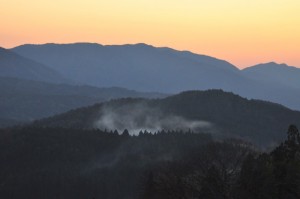 |
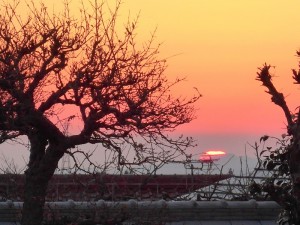 |
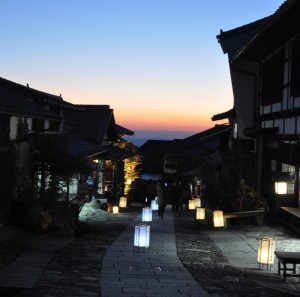 |
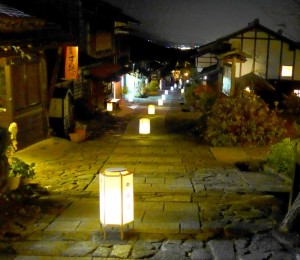 |
I was pleased to see the back of day-trippers. The place suddenly became quiet, charming and atmospheric especially with illuminations from lanterns placed along the road. While there is no Wi-Fi at the minshuku, free Wi-Fi is provided by the Tourist Information Office at a rest place. It’s really fantastic!
Around 10pm when I was in my room, I suddenly felt movements on my feet. There were also noises coming from all directions. Was it earthquake? Some guests rushed out of their rooms. The shaking lasted for several minutes. I later discovered it was indeed an earthquake of M5.8.
Day 4: Magome – Tsumago on foot (8km); to Nagiso南木曽町 & Kyoto京都 by train
I had a long and eventful day. Before breakfast, I was already out walking along the empty street. As I had to reach Tsumago in time for the parade at noon, I left Magome immediately after breakfast.
The weather was superb. I find the 8 km-long well-signed and maintained trail most enjoyable and beautiful. The scenery was natural and enchanting. I stopped numerous times to take photos. This is the beauty of travelling alone: I need not worry about my travel companion.
The walk to the Magome Pass (801m) took 45 minutes. On my way to Tsumago (42nd station) located at 600m above sea level, I saw a few monuments, two waterfalls namely Odaki – Medaki (Man’s and Woman’s waterfall) and passed through lovely woodland, farmland and the Touge Village. The foliage was bright and colourful.
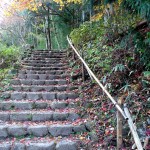 |
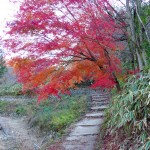 |
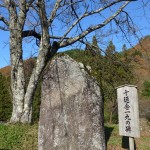 |
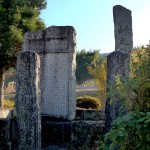 |
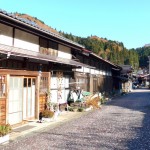 |
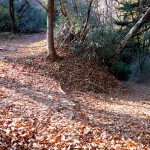 |
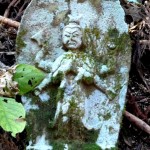 |
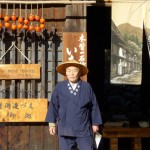 |
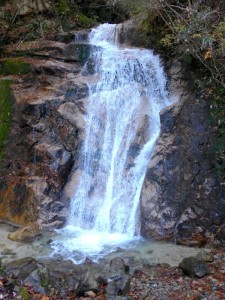 |
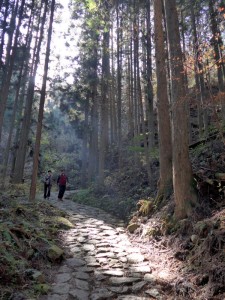 |
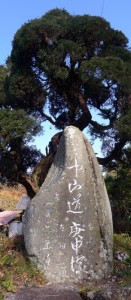 |
I find Tsumago more authentic. Today, villagers dressed in traditional clothes and paraded from their villages to the centre of Tsumago. I arrived before midday and joined the crowd to watch the colourful procession. It’s a wonderful experience.
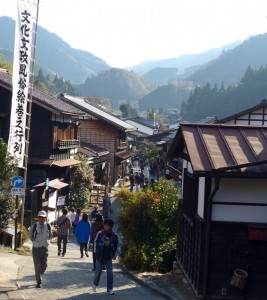 |
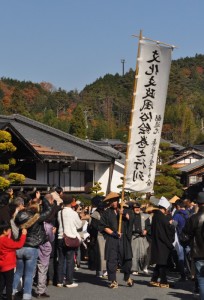 |
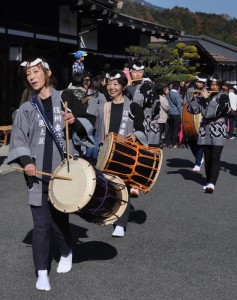 |
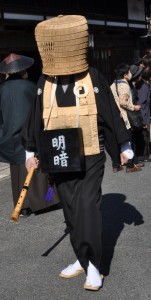 |
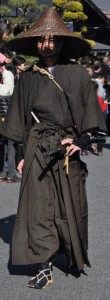 |
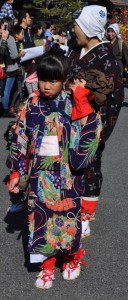 |
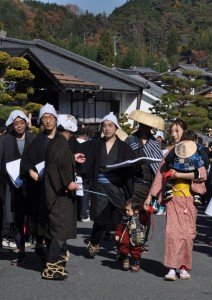 |
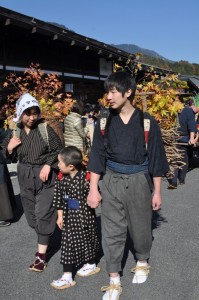 |
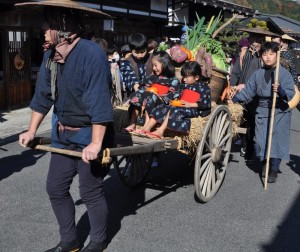 |
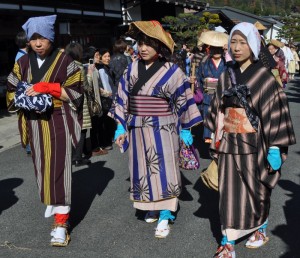 |
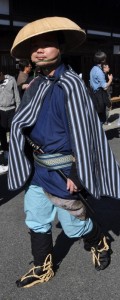 |
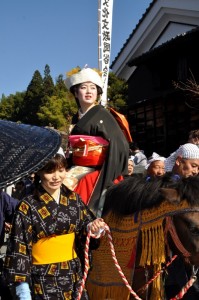 |
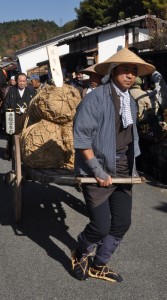 |
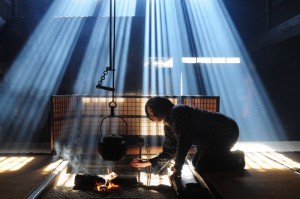 Then I brought a combined ticket (¥900) to visit the Tsumago-juku Honjin and Okuya (the Waki-honjin). I find the latter more interesting. The traditional house built in hinoki cypress wood and darkened from the smoke of the iron hearth fire is picturesque. When I stepped in this main hall, dozens of photographers were lying low on the mattress to take photos of the midday sunrays coming through the beams. I joined the crowd and spent almost half an hour appreciating the magical sunrays coming through the beams.
Then I brought a combined ticket (¥900) to visit the Tsumago-juku Honjin and Okuya (the Waki-honjin). I find the latter more interesting. The traditional house built in hinoki cypress wood and darkened from the smoke of the iron hearth fire is picturesque. When I stepped in this main hall, dozens of photographers were lying low on the mattress to take photos of the midday sunrays coming through the beams. I joined the crowd and spent almost half an hour appreciating the magical sunrays coming through the beams.
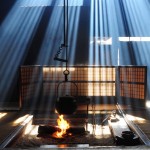 |
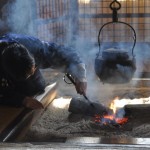 |
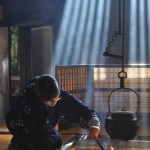 |
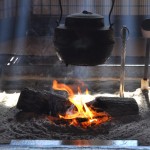 |
The adjacent museum is modern with interesting exhibits including tools, weapons, history of forestry and preservation of hinoki cypress, documents on local history, economy and daily life. I also note that some settlers in Manchuria, China during 1930s came from the Kiso Valley. I was surprised to find well-written explanations in English.
The museum staff are very helpful. One told me about the features of the old house in English. She also recommended a local eatery famous for buckwheat noodle. It’s so popular that I waited more than 20 minutes for a table. A large portion of cold hand-made buckwheat noodles cost ¥950. The noodles are delicious!
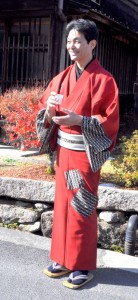 |
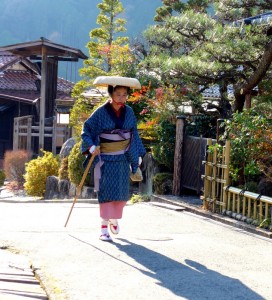 |
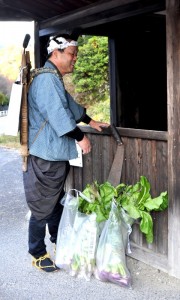 |
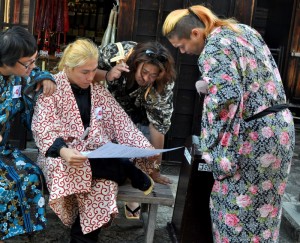 |
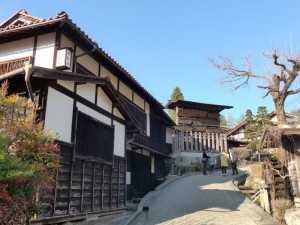 |
It’s a beautiful and warm day. All people looked cheerful. But it too crowded for me. It’s almost impossible to take a picture without people.
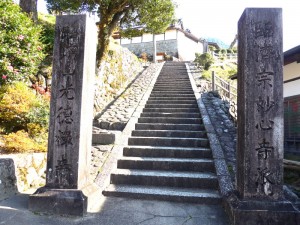 |
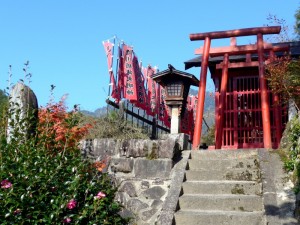 |
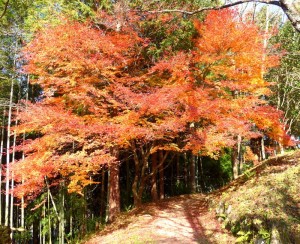 |
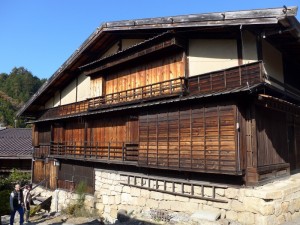 |
By the time I finished visiting the Tsumago-juku Honjin Museum, it was almost 3pm. I missed the last part of the festival including picture- taking, a competition of farm produce and free distribution of the vegetables. On reflection, I should have skipped lunch so that I could visit the museum and watch the last part of the festival.
The bus would be leaving for Nagosi at 3:26pm. I was at the bus station at 3:15pm. Though the bus was late, I still arrived at the train station at 3:45pm.
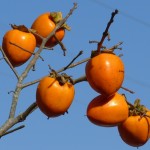 |
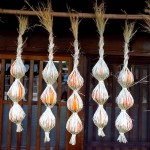 |
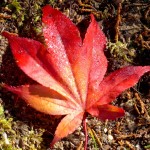 |
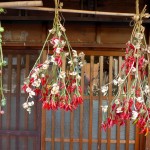 |
I had my rail pass and could take any train. Where should I go next? I had been thinking of visiting one or two more post towns or going direct to Matsumoto or Nagano. Then I would take the Chuo Line around 2pm to Hachijo to meet up with Miyo at 5pm the following day.
Then the most unexpected thing happened. I noted from the information board that the first train passing through the station would be an express train to Kyoto and Shin-Osaka! As one of the reasons of my trip was to see foliage, I decided in a split second to take the train to Kyoto instead. So before 4pm, I was on my way to Kyoto.
Owing to the public holiday and the foliage season, most if not all hotels in Kyoto were full. I spent almost an hour online looking for a room in a hotel or a bed in a hostel without success. I gave up and booked a hostel in Osaka. On my way to the Kyoto Station, I passed by a chain hotel and decided to go in to make an enquiry. Wow, they said they had a single room for ¥8,800. I was lucky!
I know the Kyoto Station fairly well. There are hundreds of eateries in the area. I went to a pub and had a glass of Beaujolais and some cold-cut for ¥1,350. I was still hungry and went to a sushi place: I had four plates of sushi for ¥560.


